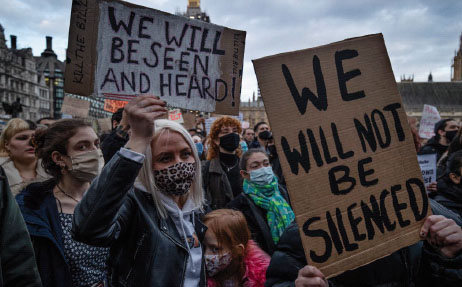Misogyny is not an issue of the past

January 19, 2022
On August 18, 1920, American women (excluding women of color) were given the right to vote. The 19th Amendment is often cited as one of the biggest milestones in the women’s rights movement, and to undermine its impact would be foolish. In the years following , the social and political climate around women began to change. Women led the workforce during the second world war, introduced second wave feminism in the 1960s, and began to diversify the workforce in the 1980s.
In the modern day, women seem to be systemically equal to their male counterparts. And by many measures, they are. We have made so much progress since the 19th Amendment was passed over a century ago. But there is still work to be done, and the idea that misogyny is an issue of the past is misinformed and harmful.
To begin, we should talk about a more concrete and technical aspect of modern-day misogyny: the wage gap. As of October 2021, women earn 82 cents for every one dollar a man earns in the workplace. Furthermore, women of color earn around 22.7 cents less than a white woman. This is a complex and nuanced issue, and it varies based on career, location, class, and many other factors. Regardless, the statistics are clear and establish a common thread.
While the wage gap is a commonly cited example of institutional misogyny, social misogyny is the most prevalent and sinister form of the 21st century. Social misogyny takes many forms: harmful gender roles, stereotypes, and most dangerously, violence. Violence, especially sexual violence, is alarmingly prevalent among women. According to the National Sexual Violence Resource Center (NSVRC), 81 percent of women have experienced some form of sexual assault, and 1 in 5 women have been the victim of an attempted or completed rape. These statistics are alarming, but not shocking by any means. Sexual violence is not an oddity, but rather a fact of all women’s lives.
Sexual violence gains its prevalence from a fertile breeding ground: the concept of “rape culture”. Rape culture is defined as the normalization of sexual violence through media and popular culture. This normalization includes misogynistic language, objectification of women, victim blaming, and emphasis on the victim rather than the perpetrator. At the end of the day, it all adds up.
How can we fix this? The truth is, we can’t. Misogyny is so ingrained in our culture that it will never truly go away. But, to start, we can begin to look at things from a critical perspective. We need to hold the perpetrators of misogyny accountable. Call out sexist “jokes” and objectification, teach people about the importance of consent, and change the narrative around sexism and misogyny.
Misogyny is a problem of the past, present, and future. It is time we treat it as such.

